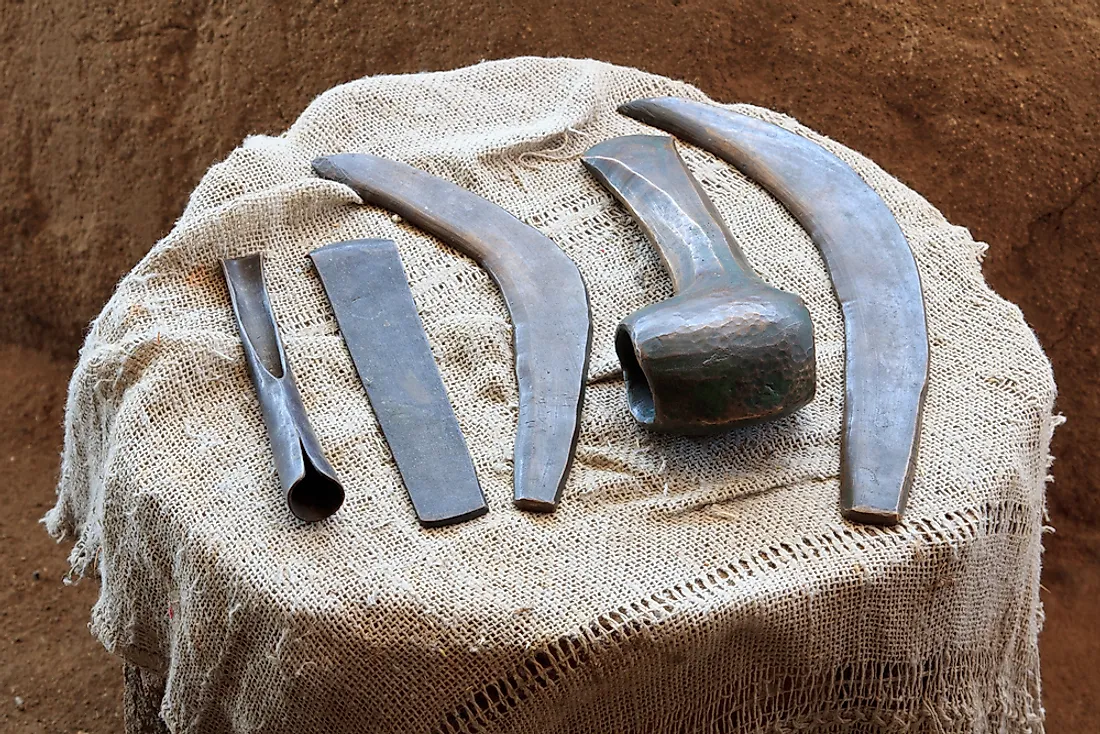What Was the Bronze Age?

The Bronze Age refers to a period where bronze was used for making tools and weapons. At that time, bronze was strong, which was why the civilizations using it were advantaged technologically. The Bronze Age is mostly notable because it was the first time that civilizations began using metals. The period exists between the Stone and the Iron Ages (in that order), which refer to ages where tools and weapons were made from stone and iron respectively. Aside from using bronze, other characteristics of the period included signs of urbanization as well as prototyping.
Lucretius first mentioned the idea of the three ages back in the first century BC. However, C. J. Thomsen of the National Museum of Copenhagen was the one who systematized it back in AD 1819. For a civilization to be considered in this age, it had to be making its own bronze (mixing melted copper and tin) or trading in bronze. Some of the popular inventions from this time are the plow drawn by an ox and the wheel.
The Chalcolithic (Copper-Stone) Age
There is some debate among some historians as to the exact beginning of the Bronze Age, which is why some of them call that period (the start of the Bronze Age) the Copper-Stone age. At that time, civilizations mostly utilized pure copper as the primary tool making material alongside stone from the previous age. During this transition period, copper was scarce, which is why it was used to make valuable objects. The first use of copper can be traced back to the eastern part of Anatolia around 6500 BCE before spreading. Copper was widely spread in the world by the time the fourth millennium was in its middle stages. However, despite the dominant use of copper, some historians still classify this period as part of the Bronze Age.
History
As stated earlier, the Bronze Age refers to a period where bronze was the dominant material used for tools. However, that is not all there was to classifying an age since other factors are also considered such as burial practices. Accordingly, therefore, different regions experienced the Bronze Age at varying times since the production of bronze required techniques that were not necessarily widespread. Europe started this age from c. 3200 to 600 BC while East Asia started it in c. 3100 and spanned all the way to 300 BC. The Near East (areas such as Ancient Egypt and Mesopotamia) and the Indian subcontinent both experienced the age between c. 3300 and 1200 BC.
The Near East
This region was the first to experience the Bronze Age due to the Mesopotamian civilization, which had massive advancements compared to other civilizations. Therefore, it is not a surprise that this region is described as the "cradle of civilization". Other than bronze advancements, the region also practiced extensive writing, agriculture, architecture, law, and other advancements. The modern-day astronomy, astrology, and mathematic techniques all trace their roots back to these civilizations.
Africa
Africa is interesting because most parts outside of Africa did not actually experience a pure Bronze Age. The reason for this is that techniques for smelting copper and iron appeared around the same time. In fact, in some parts, there is evidence that iron smelting came earlier than copper smelting. However, it is not clear where these techniques came from. Others argue that they came from within Sub-Saharan Africa while some subscribe to the theory that they came from across the Indian Ocean or from North Africa. Evidence of either theory is scarce mainly due to the demise of archaeological practices in Sub-Saharan Africa and other biases.
Trade
Trade was a major factor in the spread and adoption of bronze to civilizations around the world. Modern excavation activities have shown that ancient Mesopotamia and Egypt traded in items from the Indus Valley Civilization. In the early periods, long-distance trading happened on both land and water. The major routes included key rivers like the Nile, the Euphrates, and the Tigris, which sprouted cities next to them. On land, trade was largely helped by the use of camels that have the ability to travel long distances while surviving on minimal water. Naturally, any stops along the way became cities and major hubs that further contributed to the spread of bronze.











